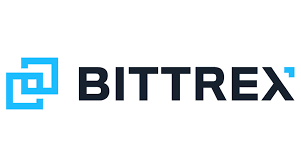What is Blockchain Technology?
If you have been on the internet in the last few years you have probably heard the phrase “Cryptocurrency” or “Bitcoin”. But have dived in to understand what even is it and how it is used?
Blockchain or blockchain is an increasing list of records (so-called blocks) that are chained together by using cryptography. Every next block keeps an encrypted hash of the previous block and by doing that it forms the “chain”. Each block also contains a timestamp and transaction data (mostly regarded as Merkle tree or Hash tree).
By its properties, a blockchain is unaffectable by modification of the data. It is a ledger that is open to the public and keeps records of transactions in a permanent and verifiable way.
(Representation of a blockchain, where black blocks represent the main chain, the genesis block is represented by the blue block, and outside the chain blocks or orphan blocks are represented by cream color blocks.)
The Types of Blockchains
There exist 3 main types of blockchains:
1. Public blockchains such as Bitcoin

2. Private blockchains such as Hyperledger
3. Hybrid blockchains such as Dragonchain
Public Blockchains
Public blockchains allow anyone to participate whether you are a regular user, a member of the community, a developer, or a miner. Every transaction that is made by using a public blockchain is public and anyone can view the details of the transaction. They are made to avoid middlemen in the transaction such as a government facility or a bank. Also, public blockchains are really resistant to censorship and government shutdowns and are not affected by any bank activity, because anyone is allowed to join the network. Lastly, all public blockchains have a token that is associated with them which is made to motivate and reward the participants of the network.
Private Blockchains
Also known as permission blockchains, have noteworthy differences from public blockchains. The participants need to have an invitation or a consent to join the network. Every transaction made is private and is only viewable by the participants of the network that have special permissions and they are more centralized compared to public blockchains.
Private blockchains are mainly used by enterprises or companies to collaborate and share data but want to keep everything private. As the name suggests, the owners of the blockchain have more control over the network and can manage its users. Some private blockchains might have token programs but they do not have to use them.
Hybrid Blockchains
Hybrid blockchains combine the best of both worlds. It uses combined principles of private and public blockchains. That means that it gives privacy benefits combined with the security and transparency of public blockchains. It gives the business the choose what is private and what can be viewed publicly. The most known example of a hybrid blockchain is Dragonchain which allows you to access a network of multiple blockchains at once.
Difference Between Blockchain and Cryptocurrency
A vast amount of people are confused about what is the difference between blockchain and cryptocurrency. You can imagine yourself as a user using the internet as a platform to gain the benefit, so the same is with blockchain and cryptocurrency, blockchain is a platform that cryptocurrencies use to work.
Why are Blockchains Necessary?
Since we now know what are the different types of blockchains and what privileges each of them has, we can learn why they are so useful. So if look at even why blockchains or cryptocurrencies were made, we can see that the reason was to avoid the unnecessary transaction middlemen, a problem known in the community as “double-spend”, and cryptocurrencies that use blockchain networks as a platform managed to do that and allow users of the network make transparent transactions that are not taxed and delayed banks or governments.











